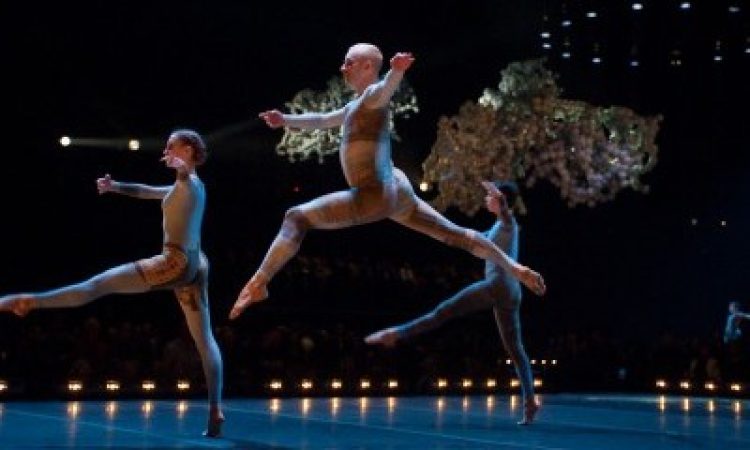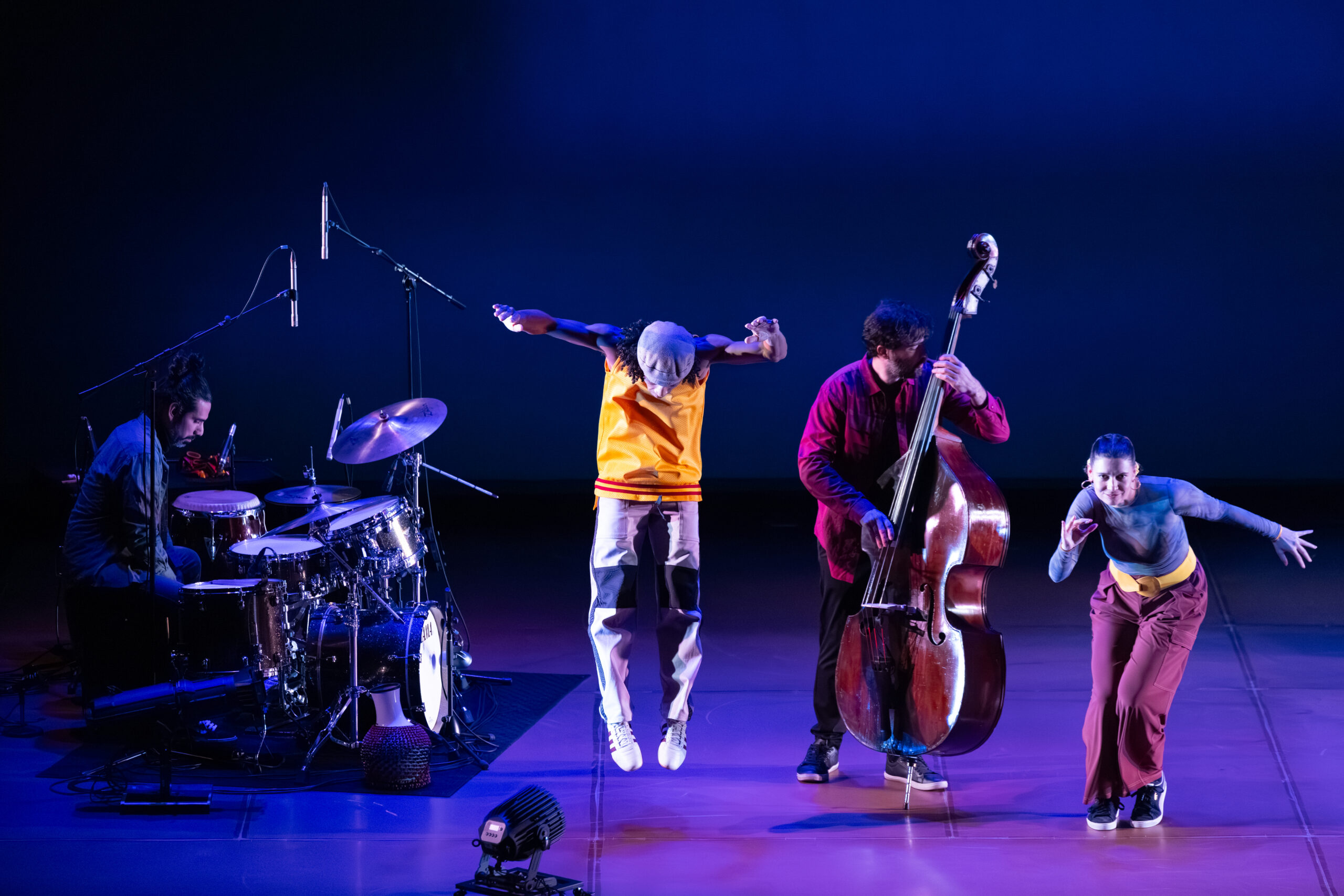Asking about the significance of Merce Cunningham’s body of work is like asking about the significance of the invention of electricity. His influence is deeply embedded in most of the pieces of contemporary choreography I see. His dances touch on so many cornerstones of art and life that it is daunting to articulate their importance in a few words. People have written books about him. I’ll try to keep this shorter than a book.
On the last night of 2011 I stood and witnessed the Merce Cunningham Dance Company perform for the last time. The evening was titled Event, and was a collection of segments from a selection of Cunningham’s pieces fused into one, well, event. As I watched this artist’s choreographic life pass before my eyes, I thought about art, and how it delivers something entirely different than entertainment. Cunningham challenged long-standing cultural assumptions about performance, dance, and the human body. The depths to which he probed made him an enormously influential artist.
Here is a verse from the Book of Tao:
We shape clay into a pot
but it is the emptiness inside
that holds whatever we want.
Consider how the metaphor of a pot relates to the difficult boundary between entertainment and art. Said boundary is nebulous and difficult to pin down, as art is often entertaining and there is a certain art to entertainment. But why are there two different words for them? And why is this distinction important in touching upon one of the many reasons Cunningham was one of the greatest choreographers of the second half of the 20th century?
When I am looking to be entertained, I hand the responsibility for my experience over to another. For example: Breaking Bad. It’s great! No matter how I feel when I start watching, in 45 minutes I will be sweating, anxious, and craving a cigarette. Maybe this is why entertainment and commercialism go so well together: you pay money and someone provides you with an experience. It’s rather simple: you pay money, and you get a pot of soup.
So if entertainment is a full pot, art is an empty pot that invites the receivers to fill it themselves. And if art is an empty pot, Cunningham crafted vats. His pieces are enormous structures, inviting experience in. What makes his works so large are the number of assumptions about dance, performance, and the theater that he called into question. By teasing apart many connections previously considered inseparable, Cunningham created a plethora of possibilities for choreographic structures. He also firmly put the responsibility for experiencing the dance back in the audience’s hands. Some of his most radical innovations include:
– Decentralizing the stage
– divorcing music and dance
– asserting that physical virtuosity was not just a means to express oneself or impress another
– through chance operations creating distance between choreographer and choreography
– de-prioritizing climax
– stripping meaning
Since he considered every point onstage as important as every other point, as an audience member I must choose where to look when watching his dances. Because the music and dance was created separately, I must make my own visual-aural connections in the very moment that I see and hear the piece. Cunningham distanced himself from attachments in choice-making by using chance operations, and so I cannot look for what he was “trying to communicate” with his dances. If he was trying to communicate something particular–an emotion, an idea, a moral, some sort of meaning–a roll of the dice could completely change his message. Cunningham didn’t do the work of making these connections for me. Instead he did the work of playing with line, form, spacing, rhythm, and weight, of following his own curiosity about the potentials of the human form. He crafted the pot, and I must fill it.
Entertainment takes me away from myself. I can forget about myself while I bite my nails, wondering if this will be the episode where Walter White actually dies. But in order to “fill the pot” of Cunningham’s work, I must engage with myself, deeply, which is goddamn difficult. It inspires tactics for evasion–boredom, frustration, sleepiness. His dances are a clear reflecting pool of myself; they reflect back to me my whole self at the moment of witnessing them.
That was very clear at Event on New Year’s Eve. A sense of finality pervaded the evening. Applause broke out after each section ended; it was our last chance to applaud these dances forever. Even as one section ended, another one began. Life goes on. However, had someone been shipped into the show from under a rock, they might have experienced something completely different. Life and death may not have been called into question. Perhaps images about pots and soup would have arisen.
Cunningham’s proposals struck at the foundation of our assumptions about dance; choreographers and dancers continue to question and prod at these proposals. That is what I’ve seen in a lot of thrilling work of late. What Cunningham did is still blowing artists’ minds. It feels, in the weeks since watching his work, that he was so far ahead of his time that the rest of us are making dances just to catch up with him, to transmit his ideas, integrating them further into our shared culture. This is crucial.
As a contemporary dancer with no money or audience it can feel like what I am dedicating my life to is meaningless. But on New Year’s Eve, I felt part of a giant network of monks; our temple is our bodies, our meditation is in class, in the studio, and onstage. When the MCDC dancers took the final bow and thus disbanded the company forever, it felt like they were passing the torch onto the next generation of choreographers, to keep pursuing new possibilities in dance for our time, just as Cunningham did in his.
For more photos of the Armory Events click here.






